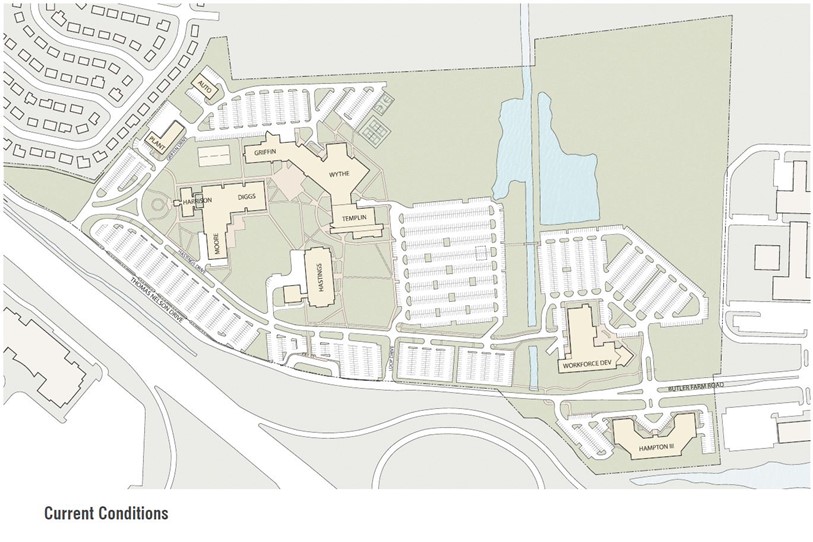Putting Community into Community Colleges
With so much of our nation’s higher education focus on four-year schools, it can be easy to miss the fact that nearly half of all undergraduates in the U.S. attend community colleges.
The CC system—numbering more than 1,100 schools—emerged as a way to get skilled job training, and as a path for students not ready for four-year colleges. Given the need for expeditious education, CC’s took shape with frugal utilitarian classroom buildings and commuter parking lots. Students predominantly drove to campus, attended classes and left. Of “campus” in the traditional sense, there was none.
That is changing, and we think for the better. Studies have shown that 80 percent of new community college students want to earn a bachelor’s degree. However, only 14 percent of the 720,000 degree-seeking students examined in a recent study—who enrolled in community college for the first time in fall 2007—transferred to and graduated from a four-year university within six years.
By adding more “community” to the community college experience, we think schools can boost student engagement, thus student success. Many campuses are moving in that direction with pushes to transform community colleges into places where students attend class and also hang out between classes, work on projects together, meet professors, socialize and, in general, experience much of what it's like to be at a four-year college. More than a quarter of public community colleges even offer on-campus housing. With students on-site 24/7, the need for spaces and amenities that ramp up learning and embellish the experience are even more in demand.

Places To Engage
Changes at Thomas Nelson Community College and the Virginia Community College System (VCCS) underscore that new community college buildings are new program spaces, and also definers and shapers of the campus environment and student experience. More than simply prescribing new buildings that provide the places and spaces that keep kids on campus, it’s the places defined by the buildings and the spaces in between that matter almost as much in creating that collegial campus environment.
Preceding a new classroom and administration building, Thomas Nelson Community College oversaw a master plan update to create a stronger presence with a more distinguished identity. It took steps to create a sense of place where buildings define exterior spaces as an extension of interior spaces that students populate in a holistic, robust learning experience. Pathways between buildings and across campus connect and energize as they weave activity, increase visual access, and extend more invitations to students to engage with others. While walking on the primary campus pathway through the courtyard and along the atrium of the new academic building, students will see other students moving between classes, studying, working in groups, or just watching the world go by.


On other campuses, we see plans to add places for students to meet between classes, to study together, to take on group projects and collaborate with advanced tools and technology. New building types that previously simply never existed on these campuses are more common, too.
- At Thomas Nelson Community College, a Health & Wellness Center and Student Services One-Stop will follow the Classroom & Administration Building.
- At Tidewater Community College in Norfolk, Va., a featured program, culinary arts, will be more visible and active with spaces to accommodate out-of-classroom learning experiences.
- In addition to adding its first residence hall for local students, Northampton Community College added a dining hall, evening and weekend activities, and extended hours at its gym and other facilities.
- In Maryland at Anne Arundel CC, the Andrew G. Truxal Library now offers spaces for individual and group work, research assistance, computer labs, and an image suggesting the civic, social and community roles that the building plays while creating connectivity on campus.
- At Howard CC, also in Maryland, the Mary Ellen Duncan Hall for English, Languages & Business and the Health Sciences buildings offer multiple floor lounges, computer labs, multipurpose and collaborative spaces, and informal circulation path seating, all connected by open communicating stairs.
Meeting Student Lifestyles
These new efforts, and spaces, will drive student engagement, which is a big concern for community colleges because many students live off-campus and attend school part-time because they also work.
What a better way to serve community college students than in ways that actually fit their lifestyles. That may not mean “res hall life,” but it certainly can mean having a comfortable lounge for group studying and inspiring nooks to sit and see and be seen by faculty and classmates.
